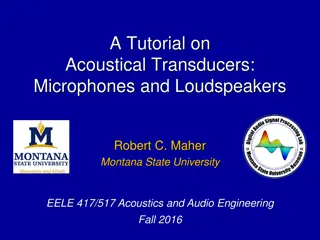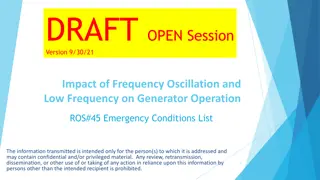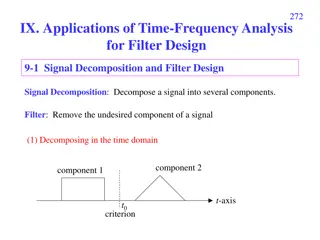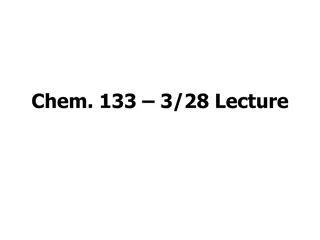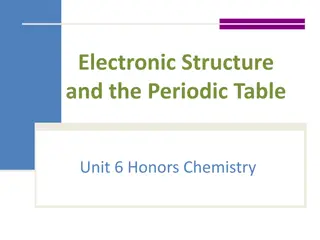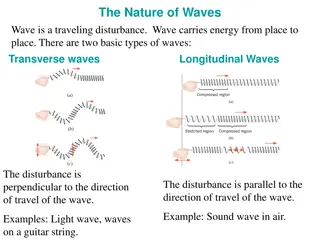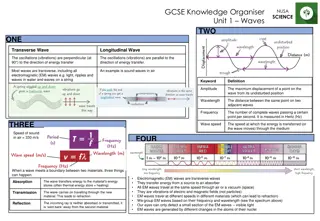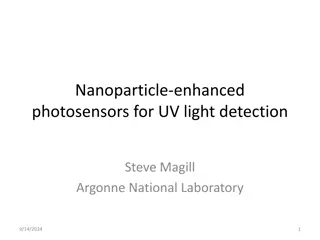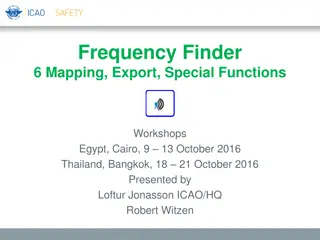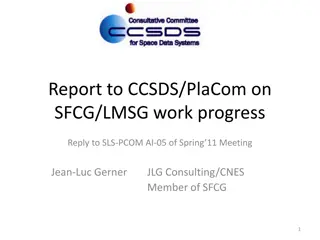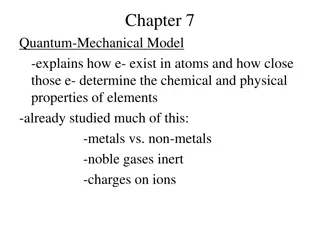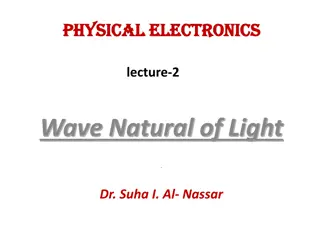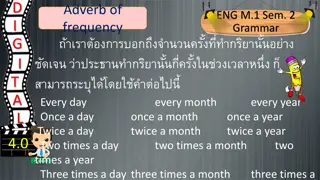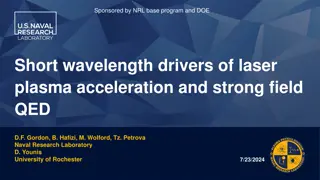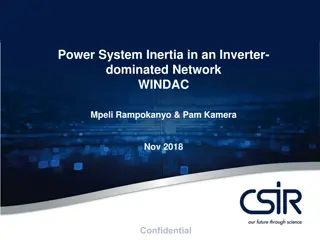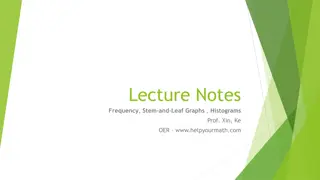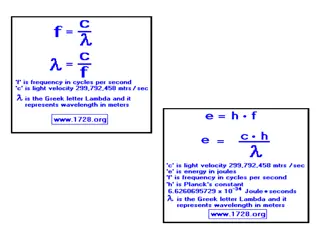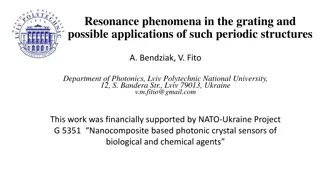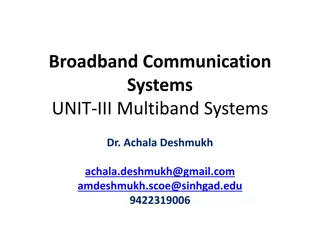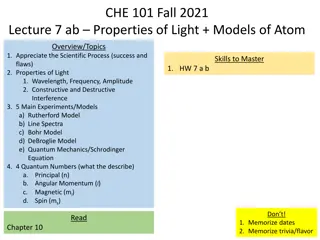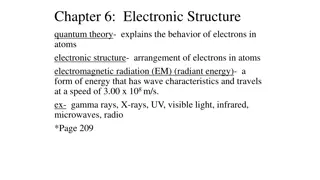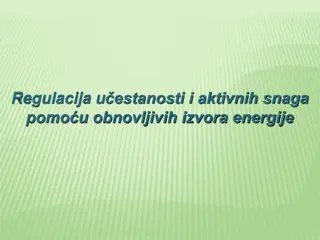Understanding Waves, Light, & Sound: Vocabulary and Concepts
This chapter covers essential vocabulary and concepts related to waves, light, and sound, including amplitude, crest, diffraction, Doppler effect, electromagnetic wave, frequency, interference, longitudinal wave, mechanical wave, medium, photon, pitch, reflection, refraction, sound wave, standing wa
8 views • 21 slides
Understanding Frequency Weighting in Noise Pollution Measurement
Frequency weighting is essential in noise pollution measurement to reflect how the human ear perceives noise. The A, C, and Z weightings are commonly used to represent different frequency responses. A-weighting covers the audible frequencies where the human ear is most sensitive, while C-weighting i
2 views • 7 slides
Load Frequency Control in Power Systems
Electric power systems require Load Frequency Control (LFC) to maintain a uniform frequency, distribute load among generators, and manage tie-line interchange schedules. LFC detects frequency changes, generates real power commands to adjust torque, and ensures stability within specified limits. Reas
8 views • 38 slides
Understanding Acoustical Transducers: Microphones and Loudspeakers
This tutorial explores acoustical transducers, focusing on microphones and loudspeakers. It covers transduction, principles of microphones and loudspeakers, as well as acoustics and psychoacoustics. Also discussed are the basics of sound, sound propagation, and the relationship between wavelength an
0 views • 33 slides
Practical Physics Experiments for GCSE Force and Waves Concepts
Explore crucial GCSE physics practical experiments focusing on force, acceleration, extension of a spring, and wave properties in water and a solid. Understand the relationships between mass, force, acceleration, extension, frequency, wavelength, and wave speed through hands-on activities and data a
0 views • 5 slides
Impact of Frequency Oscillation on Generator Operation: Emergency Conditions Analysis
Analyzing the impact of frequency oscillation and low frequency on generator operation during emergency conditions. Investigating how lower frequency affects units' ability to respond to deviations, system stability, and load shedding processes. Examining system responses during Energy Emergency Ale
0 views • 31 slides
Understanding Waves: A Visual Exploration
Explore the fascinating world of waves through visually engaging images and interactive clickers. Learn about different types of waves, including longitudinal and transverse waves, and discover what waves carry - energy, not matter. Delve into the concepts of mechanical and electromagnetic waves, an
1 views • 37 slides
Understanding UV/Visible Spectroscopy and Electromagnetic Radiation
Spectroscopy is the study of the interaction of matter with light, specifically UV and visible radiation. Electromagnetic radiation, consisting of photons, transmits energy through space as waves with oscillating electric and magnetic fields. The relationship between wavelength and frequency is key,
0 views • 50 slides
Understanding Transmission Operator Obligations in Under-Frequency Load Shedding
ERCOT Compliance ensures that Transmission System Operators (TSOs) and Distribution System Operators (DSOs) have automatic under-frequency load shedding circuits in place to provide load relief during under-frequency events. The TSOs are required to shed a specific percentage of their connected load
0 views • 6 slides
Coordinated AP Time/Frequency Sharing in IEEE 802.11be
The document discusses the concept of Coordinated AP (CAP) Time/Frequency Sharing within a Transmit Opportunity (TXOP) in the IEEE 802.11be standard. It explains the procedures of Frequency and Time resource sharing, highlighting the benefits such as latency improvement and throughput fairness. Deta
0 views • 16 slides
Analysis of Low-Frequency Response in BJT and FET Amplifiers
This analysis delves into the low-frequency response of BJT and FET amplifiers, examining the impact of various components such as resistors and capacitors on the cutoff frequencies. Detailed examples illustrate the calculation process for determining these frequencies based on specific parameters.
0 views • 18 slides
Insights from ET-ISB Workshop on Low-Frequency Noise and GWADW 2021
The ET Instrument Science Board held a workshop focusing on addressing key challenges related to low-frequency noise in gravitational wave detectors. Experts discussed topics such as mirror temperature, dealing with low-frequency noise realities, and facility limits. The workshop highlighted the sig
0 views • 13 slides
Applications of Time-Frequency Analysis for Filter Design
Signal decomposition and filter design techniques are explored using time-frequency analysis. Signals can be decomposed in both time and frequency domains to extract desired components or remove noise. Various transform methods like the Fourier transform and fractional Fourier transform are employed
1 views • 35 slides
Introduction to Spectroscopic Instrumentation and Monochromators
Today's lecture covers spectroscopic instrumentation with a focus on monochromators. It delves into the components and performance measures of spectrometers, including wavelength discrimination filters, light detectors, and energy dispersive detectors. The dispersion of light through prisms and grat
0 views • 17 slides
Understanding the Wave Theory of Light and Electromagnetic Spectrum
Explore the fascinating world of electromagnetic waves, visible light, and the wave theory through concepts such as wavelength, frequency, amplitude, and the speed of light. Understand how these elements are interconnected, and discover the diverse range of the electromagnetic spectrum. Dive into th
0 views • 77 slides
ICAO Handbook on Radio Frequency Spectrum Requirements for Civil Aviation Workshops
This handbook provides insights into spectrum requirements for civil aviation workshops conducted in Egypt and Thailand in October 2016. It covers spectrum strategy, frequency management, spectrum overview for aviation, and frequency assignment planning to support the application of SARPs in Annex 1
0 views • 10 slides
High Frequency Market Microstructure - A Comprehensive Overview
Delve into the intricate world of high-frequency market microstructure with a detailed exploration of how traders operate, market structures, regulatory influences, and the evolution of trading platforms. Uncover the birth of High-Frequency Trading (HFT), the strategies employed by high-frequency tr
0 views • 12 slides
Exploring the Nature of Waves and Sound
Understanding the nature of waves, both transverse and longitudinal, and their properties such as amplitude, wavelength, and frequency. Delve into the world of water waves, periodic waves, and the speed of waves on a string. Learn about the longitudinal nature of sound waves, the audible frequency r
0 views • 16 slides
Understanding Waves: Properties, Behaviors, and Applications
Waves come in different forms - transverse and longitudinal - each with distinct characteristics and behaviors. Understanding concepts like amplitude, wavelength, frequency, and wave speed is crucial in grasping how waves transfer energy through different materials. The interaction of waves with bou
0 views • 9 slides
Advances in Nanoparticle-Enhanced Photosensors for UV Light Detection and Quantum Confinement Research
Nanoparticle-enhanced photosensors are being developed by Steve Magill at Argonne National Laboratory for UV light detection, utilizing quantum confinement to enhance electronic and optical properties. Quantum confinement creates discrete energy levels in nanoparticles smaller than the electron wave
0 views • 30 slides
Understanding Two-Way Frequency Tables in Data Analysis
Explore the concept of representing and interpreting data in two variables using two-way frequency tables. Learn about joint frequency, marginal frequency, and conditional relative frequency through a practical example involving gender and nail services. Discover how to target specific audiences bas
0 views • 15 slides
Exploring the Universe: X-Ray Surveys with Space Observatory
Delve into the fascinating world of X-ray surveys conducted by the Space Observatory at Khyung Hee University. Learn about the significance of X-ray surveys in detecting emission from hot regions of the Universe, minimizing errors in redshift measurements, extending the sample to higher redshifts, a
0 views • 16 slides
Frequency Finder 6 Mapping Workshops Overview
Explore the Frequency Finder 6 Mapping, Export, and Special Functions workshops held in Egypt and Thailand in October 2016. The workshops cover topics such as mapping station coverage, exporting data to different formats, accessing historical frequency assignment records, and ensuring data integrity
0 views • 7 slides
Progress Report on Lunar-Mars Spectrum Group Work within SFCG
The Lunar-Mars Spectrum Group (LMSG) met to review important input documents related to lunar communications, including compatibility studies, frequency considerations, and frequency assignment guidelines. The group identified the need for further work to refine proposed reports and agreed on new ac
0 views • 17 slides
IEEE 802.11-18-1269-00-00az Clock Synchronization Investigation
In July 2018, a document was presented by Feng Jiang et al. from Intel Corporation focusing on clock synchronization between ISTA and RSTA in IEEE 802.11-18-1269-00-00az standard. The document delves into the impact of sampling clock errors on range estimation, carrier frequency synchronization in 1
0 views • 10 slides
Understanding Quantum-Mechanical Model and Electromagnetic Waves
Quantum-Mechanical Model delves into how electrons exist in atoms, shaping the chemical and physical properties of elements. It contrasts metals and non-metals, emphasizes noble gases' inertness, and explains the charges on ions. Additionally, it explores the similarities between electrons and light
0 views • 33 slides
Understanding Traveling Waves: Types, Properties, and Equations
Explore the world of traveling waves, including mechanical, electromagnetic, and matter waves. Learn about transverse and longitudinal wave motion, the speed of waves in strings, wave frequency, wavelength, and speed relationships, as well as wave equations for non-repeating waves over space and tim
1 views • 30 slides
Understanding the Dual Nature of Light: Wave and Particle Models
Light exhibits a dualistic nature, being describable both as a wave and a stream of particles known as photons. The wave model explains phenomena such as interference patterns, reflection, refraction, and diffraction, while the particle model clarifies how light can cause electrons to be emitted fro
0 views • 16 slides
Understanding Adverbs of Frequency in English Language Studies
Explore the usage of adverbs of frequency such as "every day," "twice a month," and "once a week" in English grammar through exercises and examples. Enhance your understanding of how to construct sentences using present simple tense to describe regular activities. Practice placing adverbs in sentenc
0 views • 53 slides
Advances in Laser Plasma Acceleration and Strong Field QED Research
Exciting advancements in laser plasma acceleration using short wavelength drivers and strong field QED research are being made, with studies involving excimer lasers, electron beam pumping, and high-power amplifiers. Techniques like excimer multiplexing are explored for multi-stage laser wakefield a
1 views • 24 slides
Understanding Power System Inertia in Inverter-Dominated Networks
This study explores the impact of high levels of instantaneous inverter-based renewable energy penetration on power system inertia. It delves into fundamental concepts of energy balance, frequency control, load/frequency characteristics, and the importance of system inertia in maintaining grid stabi
0 views • 20 slides
Understanding Frequency, Stem-and-Leaf Graphs, and Histograms in Data Analysis
Frequency, relative frequency, and cumulative relative frequency are explained with examples. Stem-and-leaf graphs help in organizing small data sets, while histograms display data with continuous variables. An example with heights of male soccer players demonstrates constructing histograms. Calcula
0 views • 11 slides
Practice Problems on Wavelength, Frequency, and Energy
Solve problems relating to wavelength, frequency, and energy of electromagnetic waves. Calculate frequencies, wavelengths, and energies of light in various spectra including violet light and microwave radiation. Understand the relationship between wavelength, frequency, and energy in different scena
1 views • 7 slides
Understanding Electromagnetic Radiation and Quantum Energy in Chemistry
Delve into the fundamentals of atomic structure, periodicity, and electromagnetic radiation in chemistry. Explore the concepts of wavelength, frequency, speed of light, and quantum energy. Learn about important terms, example problems, Max Planck's contributions, and the photoelectric effect. Unrave
0 views • 67 slides
Resonance Phenomena in Grating Structures and Applications
Resonance phenomena in grating structures, such as dielectric or metal gratings on substrates, offer sensitive elements for detecting biological and chemical agents. The sensitivity of these structures is described by equations relating to resonant wavelength changes and the refractive index of inve
0 views • 20 slides
Understanding Multiband Systems in Broadband Communication
Explore the world of Wavelength Division Multiplexing (WDM) and its components, including fiber couplers, isolators, circulators, multiplexers, and demultiplexers. Learn the benefits of WDM technology such as capacity upgrade, transparency, scalability, and wavelength routing. Discover how WDM, CWDM
0 views • 51 slides
Exploring Properties of Light and Models of the Atom in Chemistry
Delve into the fascinating world of light properties and atom models in chemistry. Unravel the scientific process, from successes to flaws, and master concepts like wavelength, frequency, and amplitude. Explore key experiments and models such as the Rutherford, Bohr, and DeBroglie models, as well as
0 views • 24 slides
Understanding Electronic Structure and Quantum Theory in Atoms
Electronic structure and quantum theory elucidate the behavior and arrangement of electrons in atoms, with a focus on electromagnetic radiation, wavelength, frequency, and the speed of light. The inverse relationship between frequency and wavelength is explored through practical examples involving r
0 views • 34 slides
Effective Regulation of Active Power in Renewable Energy Sources
The balance between generation and load is crucial in power systems operation. Various control levels ensure this balance, from frequency control to power station planning. DER units may lack control means, but specific configurations allow for frequency and voltage control. Performance indicators a
0 views • 51 slides
Understanding Wireless and Mobile Communication Fundamentals
Explore the basics of wireless and mobile communication, covering topics such as transmitting voice and data through electromagnetic waves, the electromagnetic spectrum, wavelength of different technologies, frequency channels, and examples of channel allocation between stations. Learn about simplex
0 views • 42 slides



